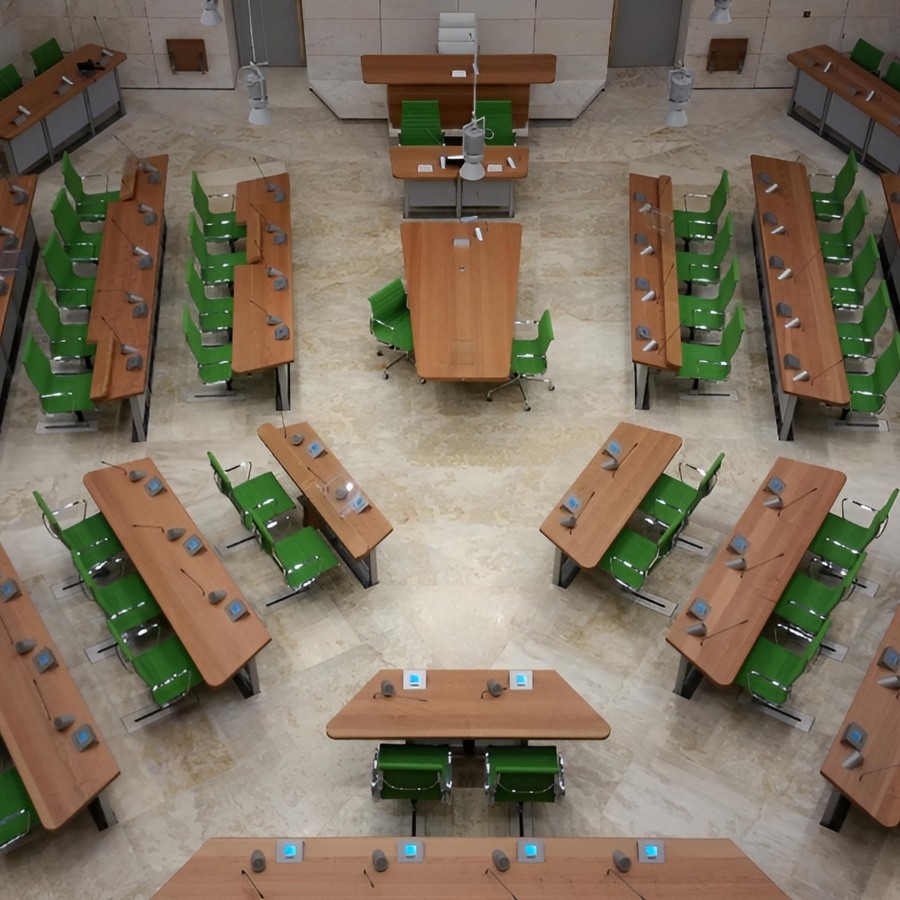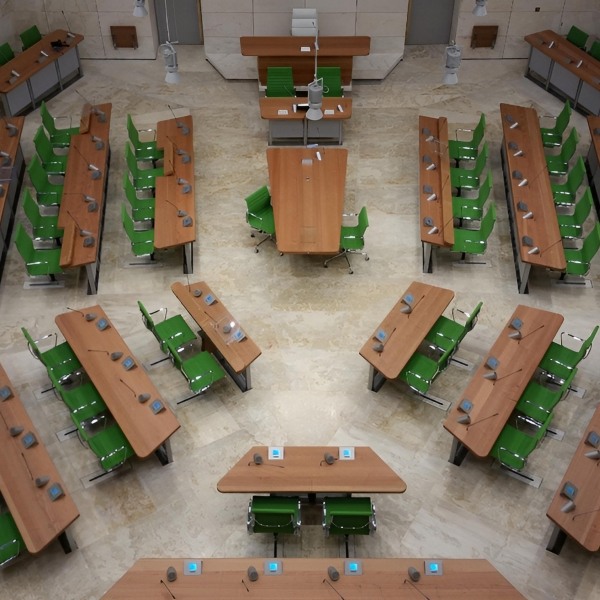
New Malta Parliament Audiovisual Systems Integration
Client:
Parliament of Malta
Solution:
Audiovisual
Industry:
Government & Public Sector
Country:
Malta
Project Summary
Between 2012 and 2015, Telmaco designed, supplied, and integrated advanced audiovisual systems for the new Maltese Parliament in Valletta. Working under the design vision of architect Renzo Piano and the engineering oversight of Arup, Telmaco delivered a complete solution covering the main chamber, committee rooms, meeting rooms, offices, and public spaces. The scope included congress systems, video production and distribution, streaming, IPTV, control, and emergency audio systems, establishing a benchmark for government AV installations in Malta.
23,000 m²
Building Area Across Three Level
69
Elected Seats in the House of Representatives
65 km
Total Cabling Installed
2015
Completion Year
Overview
The New Malta Parliament was part of the City Gate redevelopment project in Valletta, designed by Renzo Piano. Telmaco was selected as novated subcontractor to deliver all audiovisual systems for the Parliament building. The systems spanned plenary and committee rooms, meeting rooms, offices, and public areas, ensuring seamless congress management, broadcast-quality video, streaming and archiving, IPTV distribution, and emergency voice evacuation. Integration required close coordination with international consultants and contractors, meeting exacting standards of design, acoustics, and functionality.
The Challenge
High-profile government project with strict integration demands.
Delivering state-of-the-art AV systems within a landmark building by Renzo Piano.
Coordinating design and installation with international consultants and contractors under tight schedules.
Ensuring broadcast-quality production integrated with a digital congress system.
Providing secure streaming and metadata-based archiving for public access.
Meeting high acoustic and functional standards defined by Arup.
The Solution
End-to-end audiovisual systems across all parliamentary spaces.
Cabling Network
65 km cabling: 32 km Cat6a, 12 km HD-SDI, 9 km fiber, 12 km audio with stainless steel panels.
Congress System
DIS DCS 6000 with custom stainless steel delegate units and full interpretation support.
Video Production
Panasonic robotic HD cameras with automatic switching, overlays, and manual vision mixer control.
Audio Relay
Biamp DSP and Cobranet distribution delivering show relay across offices and public spaces.
Central Router
Grass Valley NVISION 8500 linking all rooms and chambers to a central control point.
Recording & Streaming
Arbor Media LogDepot with full metadata search, transcription, and Connected Views web access.
Video Conferencing
Cisco codecs for secure multipoint sessions over LAN, internet, and ISDN.
Projection Systems
Barco PFWU projectors with dnp Supernova screens for bright, clear display in committee rooms.
IPTV Distribution
Exterity IPTV with satellite, terrestrial, internal feeds, and digital signage integration.
Voice Evacuation
Bosch Praesideo voice alarm–compliant system integrated with audio relay.
Machine Rooms
Three distributed rooms for AV infrastructure, routing, and IT systems.
Control & Automation
CUE touch panel automation for congress, privacy functions, video overlay, and timing.
Tailored Services
Integration of video production systems with automatic camera switching, graphics overlay, and broadcast feeds.
Arbor Media LogDepot recording and streaming with searchable metadata for plenary and committee sessions.
Centralized Grass Valley NVISION 8500 video routing and control room operation.
In-house and web streaming platforms connected with the conference system for live and on-demand access.
DIS DCS 6000 digital congress system with Biamp DSP processing and K-array speaker coverage.
HD-SDI Panasonic robotic cameras with auto-switching and broadcast-quality video production.
CUE-based automation for AV equipment, session timing displays, privacy buttons, and division bell.
On-site training and support for parliament staff to ensure smooth operation and future expansion.

